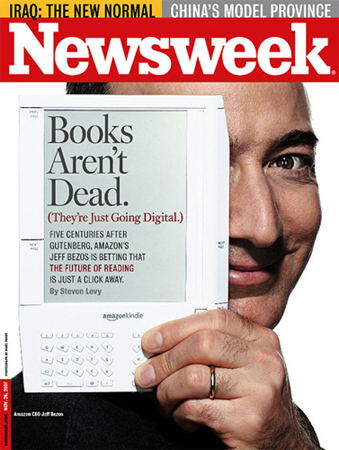April 17, 2009
[ugc3] The Evolution of UGC
Dan Hunter of NY Law School begins with an informal talk called “UGC: From Threat He disagrees with Eli Noam that the end game will be commercialization. [Ah, the exceptionalist battle is joined!] He thinks about UGC as amateur media, focusing on the motivation of the users. His question: Is there a role for commercial providers, outside of providing the infrastructure? The content will increasingly be provided by people whose motivations are non-commercial. (He shows Wolf Loves Pork at YouTube.com. Very cool.)
It’s important to not think this is about traditional media forms, he says. It includes virtual worlds, collaborative games. People are living out their lives in these environments. UGC is not something separate from our lives. It is our environment.
Amateur work is crowding out the commercial, he says. E.g., YouTube, music, user reviews at Amazon etc. Most of the money is in the infrastructure, not the content: Blizzard providing World of Warcraft, Google, etc.
Q: Google lost $500M this year on YouTube.
Dan: If you’re suggesting there’s no money in infrastructure…We can’t yet know if that’s a blip, a market indicator, etc.
Q: Two examples that support your case: 1. Orpheus Orchestra has no conductor. 2. YouTube orchestra is collaborative.
Dan: Sites like Wikipedia can be quite bureaucratic. There’s a range of examples, some totally spontaneous.
Q: Wolf Eats Pig actually ends the other way around, which is a bad moral and is very worrisome for Japanese society.
Next, David Card of Forrester Research presents research. [I’m not going to try to capture the numbers.]
Social networking is becoming ubiquitous, but the “creative stuff” is still a minority behavior and is not growing at the same pace as social networking, watching videos, or writing reviews. Budgets for social marketing are still pretty low because the value of it is unproven. [His data actually show that few people can prove profitability from social marketing but a majority think it is valuable]
Social network business models: It will be like air (cf. Charline Li). Or it’s a walled garden. Or it’s a media model. The portal model faces threates from Google and social networking sites. AT SNS’s people view photos and videos, keep up with friends, etc. They’re not consuming much professional content there. Marketers should “tap entertainment media, then build out social marketing promise.” Facebook’s “Beacon” idea was powerful but ineptly handled. [Beacon: When buy something, it asks if you want to share that news with your FB friends.] Money is more likely to come from the audience than from authors; the real social marketing potential is untapped.
Q: Opportunity: Harvesting social networking data for customer relationship management. [Doc Searls: This one’s for you! :)]
David: Lots of people do this. P&G. Fox. They bring in the audience to get feedback. “If you get them into real product development, that’s a nirvana.” Although you have to be careful that you’re not handing design to a niche market of your most enthusiastic customers.
Q: Keeping track of the metadata about the types of info makes this huge market of info usable.
David: Do you mean Amazon ought to make its customer available to others?
Q: No.
Q: The virtual is piercing the physical, ending up in offline retail.
A: Interesting.
Q: What guidance for employees active in these spaces, so they feel free to express their ideas but also potentially censorship?
David: Forrester analysts have personal blogs as well as company blogs. Neither are reviewed. We have policies that say you should think about what you’re saying. But if it’s too heavy handed so that employees look like shills, they won’t get a very big audience. You have to play by the rules of the medium — uncensored, rapid response (e.g., WholeFoods responds instantly, even if it’s an intern in a closet sometwhere) — authenticity, etc. It’s a delicate line.
Robert Cohen talks about business adoption of virtual worlds. He points to the broad use of interactive sites by children 7-12, suggesting that we’re seeing a deep change. There are over 100M subscribers to the Barbi site and 100s of millions of Habbo users. This may portend a generational change.
He points to three waves: Content-centric, Surface [he’s using a Microsoft chart], and immersive. He’s interviewed 50 vendors about how virtual worlds will be used. It has the potential to affect the way business operates (he says). First, it enhances training and teamwork. Then, more interactive corporations. Over the next tend years we’ll see collaborative corporations (among suppliers and product developers) and “modern guild system firms” (“highly technologically competent firms that come together to collaborate on projects”). He points to oil companies using virtual worlds to model environments for training, exploration.
Q: The press is reporting that SecondLife has stumbled in growth and development. And how can we get from Barbi style product focus to a platform approach?
Bob: There’s controversy about this. BTW, Mitch Kapor is working on putting your photo on your avatar and making the movement more realistic. SecondLife also has bought a company that does business operations. But IBM has shown a way to connect virtual worlds through a firewall. But SecondLife is trying. There’s a lot going on i n Europe.
[Posting without rereading so I can go to the break. Sorry.]










